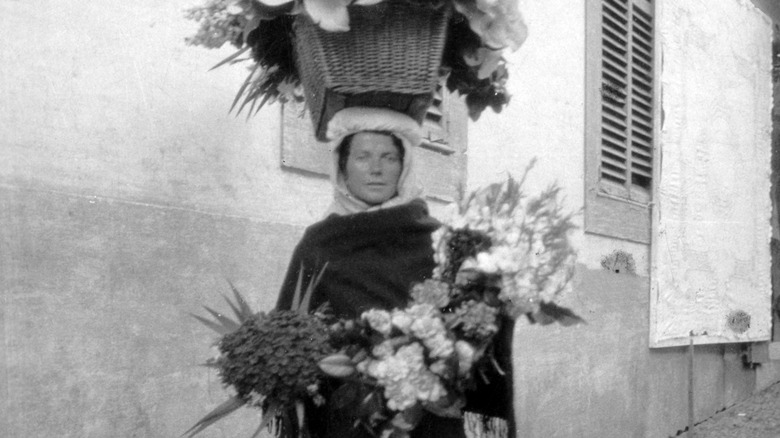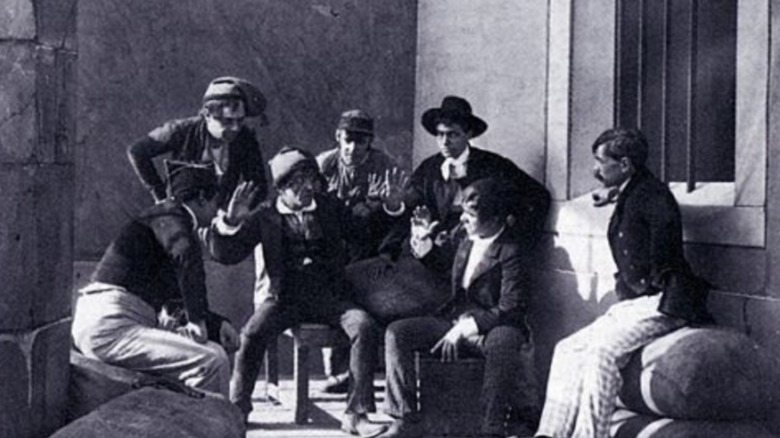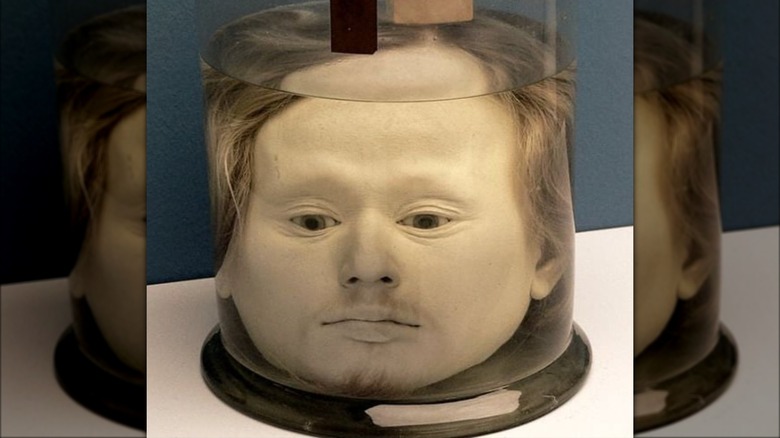Why Does Portugal Have The Head Of Their First Serial Killer In A Jar?
Arguably one of the most intriguing aspects of history are the people who have done some pretty bad things. One dark part of history that society has often had a morbid fascination with is murder — in particular, serial killers. Today, information about these types of criminals is readily available through internet research, books, documentaries, and podcasts, but this was not always the case. In the centuries before the interwebs, people had to use other methods when studying these murders.
For a time during the 19th century in Portugal, someone was terrorizing the streets of the capital city. In 1840 a man named Diogo Alves was apprehended and convicted of multiple murders (per Owlcation). He has been referred to as "Portugal's first serial killer" and as such, people were curious about what made him the monster that he was believed to be. Instead of just being executed for his crimes, Alves' remains were preserved in an unconventional manner for the even more unusual purpose of being studied.
Who Was Diogo Alves?
Diogo Alves was born in 1810 in Galicia, Spain to a poor family. He spent his childhood there, but when he was 19 he moved to Portugal's capital, Lisbon, according to Owlcation. While there he started working as servant but reportedly developed a gambling and drinking problem. As his life began to deteriorate, he also began an intimate relationship with a local innkeeper. It is speculated that this relationship gave him access to where he began to commit some of his heinous crimes.
Alves was able to steal keys and therefore grant himself access to a place known as Reservato de Mae Aguas das Amoreiras. According to Turismo de Lisboa, this resovior was built to both hold and ultimately distribute water via the Aguas Livres Aqueduct. Having access to this area near the aqueduct was instrumental to what would become Alves' modus operandi as well as his favorite hunting ground.
His Crimes in Lisbon
The Aqueduto das Águas Livres, also known as the Aqueduct of the Free Waters allowed farmers and others who lived in rural areas outside of Lisbon to get into the city (per All That's Interesting). Theoretically this path into town should have made travel easier, but unfortunately for them, this led them right into the path of Diogo Alves. It is believed that Alves would wait for these travelers to go into Lisbon and sell their products targeting them on their way back home.
As these farmers made their way out of the city, Alves would stop them and then rob them of all that they had earned while in the city. Not only would he strip them of their money, but he would also take their lives by throwing them off the 213-foot tall aqueduct to fall to their death. Alves began his killing spree in 1836 and by the time he was captured four years later, he is believed to have killed at least 70 people.
Where Were The Cops?
In today's world, it would be nearly impossible to get away with that many murders and not be apprehended. According to Owlcation, local cops at the time believed all of the deaths off of the aqueduct to be copycat suicides. Because of this, they closed access to the area temporarily, which did stop the deaths for a while.
What looks like ineptitude by the police may have actually had more to do with the time period in which Alves was committing his murders. Less than two decades had passed since the Liberal Revolution of 1820, which threw the country into both economic and political turmoil. During this ensuing chaos, it is possible that the police just assumed that the deaths were suicides of those in the lower social classes. The poor and others of lesser status were taking a beating financially and struggling just to eat, so this assessment may not have been too far-fetched.
Capture, Conviction, and Execution
As you can imagine, Alves was not happy about this as his hunting ground had been taken away. However he did not let this stop his criminal activities. Instead, he decided to get a group of his robbing buddies together and form a gang. As a group they began breaking into the homes of the wealthy citizens of Lisbon. Though they wreaked havoc on the city for awhile, Alves and his gang were eventually apprehended in 1840 after breaking into the home of a local doctor and murdering multiple people inside, according to História De Portugal.
Diogo Alves was tried and convicted after his arrest and sentenced to death by hanging. On February 19, 1841, his death sentence was carried out. While that should have been the end of Diogo Alves, his gruesome legacy was carried on in a rather unconventional way, in the name of science.
The Unusual Fate of His Remains
At the time of Diogo Alves' demise, the study of phrenology was on the rise. According to Atlas Obscura, this "revolutionary" idea allowed the brain of a human to be "studied" by feeling the shape of their skull. While today we know this to be completely inaccurate, at the time they believed you could learn about someone, particularly their personality by palpating and measuring their skull. As this was a popular area of study at the time, a request was made following Alves' death that his head be removed and preserved so that it could be studied.
The head of Diogo Alves was subsequently severed and preserved in a jar, with the hopes of learning more about why he committed his crimes. How much the head was actually studied is not known. Nearly two centuries later Alves' head remains at the University of Lisbon's Faculty of Medicine and can be visited today.





